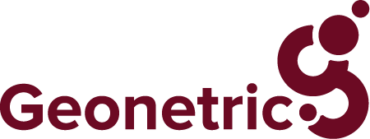If the first thing you think of when you hear the term “Gen Z” is a teenager sitting around absentmindedly scrolling TikTok, think again.
Gen Z is typically categorized as people born between 1997 and 2012, meaning that while some of them are still teenagers, many have now moved into young adulthood — and have started making their own decisions regarding healthcare (and yes, some of them are using TikTok to do it).
This presents healthcare marketers with an opportunity to guide these Gen Z consumers as they handle their own healthcare for the first time, answer their questions, and build lifelong customer relationships. Even if a Gen Z consumer is still using their parents’ health insurance and the providers they grew up seeing, you can foster their continued loyalty by offering marketing messages that speak to the healthcare challenges they’re facing as they enter adulthood.
But what is the best way to reach this valuable new audience? Here are a few things to consider when marketing to Gen Z patients.
They’re stressed, and looking for answers
Despite their age, Gen Z keeps up with — and is significantly impacted by — today’s news, especially political unrest, climate issues, and mass shootings.
A study from the American Psychological Association found that Gen Z reported higher stress levels than any other age group, including Millennials and Gen X, and are 37% more likely than any other generation to report their mental health as fair or poor.
But amidst that stress, there is hope. Gen Z is open to talking about their mental health and asking for help when they need it. They also value diversity and inclusivity and tend to align with brands consistent with their core values and beliefs.
They prioritize online experiences
Remember that Gen Z was raised alongside smartphones, apps, and social media, and they expect instant, online answers when researching their care options.
Gen Z also prefers service transactions with minimal human interaction. They don’t want to wait in line or be on hold for a human operator — they expect to be able to handle most, if not all, of their healthcare tasks online, including:
- Scheduling appointments
- Checking to see if your organization accepts their health insurance
- Seeing if a provider is accepting new patients
- Reading provider reviews
If your organization doesn’t offer ways that patients can easily complete these tasks online or through a mobile app, now is the time to change that.
They’re looking for convenient care
Gen Z is increasingly dissatisfied with the quality of traditional healthcare services — they don’t want to wait to see their primary care physician in six months if another option is available today.
That means they’re looking for more emergent types of care like walk-in clinics, urgent care, retail clinics, on-demand services, and telehealth. Research has shown that this generation is extremely interested in emerging health technologies that allow them to receive care faster, especially virtual health.
But that doesn’t mean they’re eschewing traditional healthcare entirely — 45% of Gen Z patients report having a primary care physician. However, they supplement those visits by searching for their conditions online, using walk-in clinics, and seeking out more convenient options for care whenever possible.
They listen to their peers
Gen Z is twice as likely to make a purchase based on the opinions of their peers or Millennial friends and family members as they are based on a celebrity or influencer.
One study found that the people Gen Z trusts the most are their family members (88%), friends (84%), and regular people doing good things (81%) compared to journalists (47%), religious leaders (44%), and politicians (42%).
This means that your Gen Z consumers will be paying special attention to any social proof you can provide about your organization, including patient stories, testimonial videos, and ratings.
They’re at a critical point in their healthcare journeys — and you can meet them there
Many Gen Z consumers are at a point in their lives where they’re independently interacting with the healthcare system for the first time.
This provides an incredible opportunity for you to forge a connection with those consumers now while they’re actively looking for answers and starting from a blank slate, compared to years down the line when they already have healthcare experiences and additional needs.
So, where should you start to ensure your marketing is ready for this new wave of young healthcare consumers?
Your Gen Z marketing checklist
Here are a few takeaways to keep in mind when assessing your marketing strategy’s readiness for Gen Z patients:
- Your website needs to be easy to use on a smartphone or tablet.
- If you have the resources, consider investing in an app that allows patients to schedule appointments, request prescription refills, see wait times, etc.
- User-generated social proof matters — craft social media campaigns that prioritize reviews, testimonials, patient stories, and “behind the scenes” content of your organization.
- Forty percent of Gen Z Americans spend more than four hours on social media per day, so make sure your messages extend to platforms including Facebook, X, Instagram, TikTok, and YouTube.
- Young consumer prefer to consume educational materials through video, so consider utilizing TikTok and YouTube when creating educational campaigns.
- Gen Z is looking for “snackable,” short, and impactful videos. When creating videos for TikTok, Instagram Reels, or YouTube Shorts, keep your important messages in the first eight seconds (the average attention span for short-form video content).
- Keep your marketing messages authentic and showcase real patients and people within your organization.
Are you ready for Gen Z patients?
Whether your marketing strategy is ready or not, this new generation of patients is headed your way. Grab their attention now and help them build lifelong relationships with your organization with impactful, authentic marketing.
If you’re looking for help with website design, content marketing, or social media strategies that can win over younger patients, our team is ready! Contact us today to find out how we can get your marketing strategy ready for this next generation of consumers.










